“Soldiers! From the top of those pyramids, forty centuries watch you!” Napoléon's famous harangue to his troops before the battle in which he defeated the Mamluks almost became mere testimony to a vanished memory just four decades later, when the Ottoman wali (governor) of Egypt suggested using the stone of these monuments as material in the works of the Suez Canal. He prevented the chief engineer from him by resorting to a trick to avoid being dismissed for contradicting him. Linant Pasha was that man to whom we owe the survival of the pyramids of Giza... or maybe not? Let's see.
To be exact, his name was Louis Maurice Adolphe Linant de Bellefonds, born in Lorient (France) in 1798, the son of a merchant seaman who tried to give him a good academic training, especially in those disciplines that could come in handy for a life as a navigator. , case of mathematics or art (drawing and painting, important in exploration trips, more and more numerous). The reason was that Antoine-Marie, such was the grace of his father, began to take his offspring with him on board.
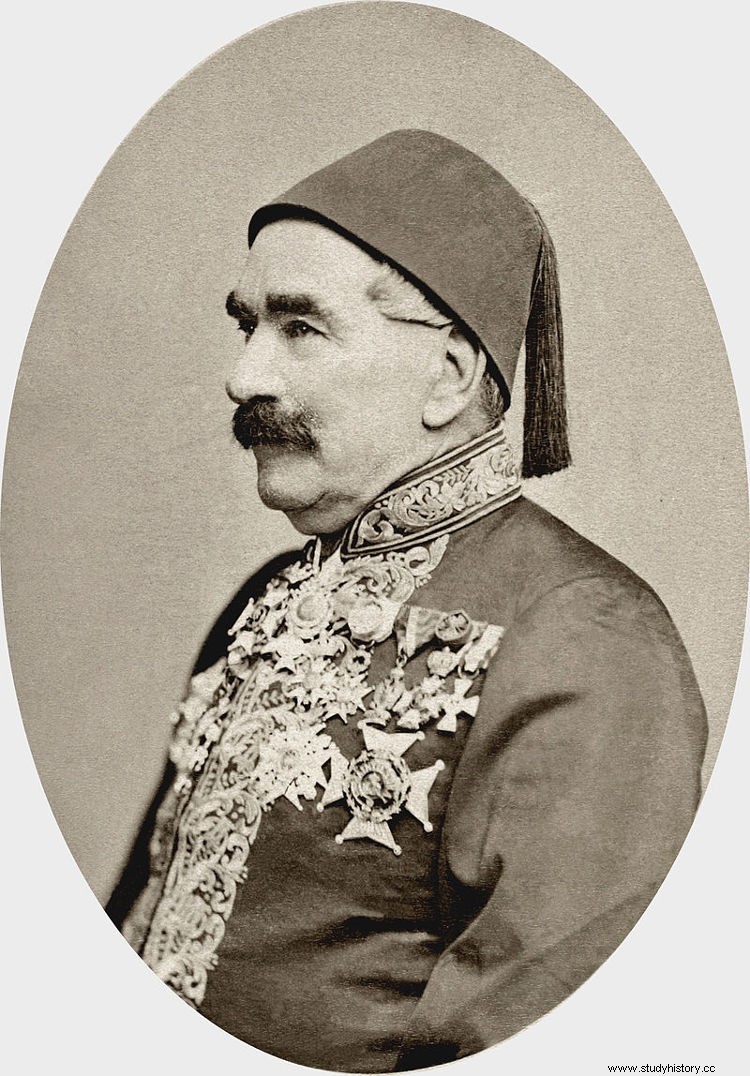
Thus, before the age of fifteen, he already had considerable experience at sea and had been to places as far away as Newfoundland. Although the young Linant was not enthusiastic about this trade, because what he really liked was cartography -drawing maps, drawing nautical charts...-, in 1815 he passed the exams and embarked as a midshipman on the frigate Cléopâtre , with which he toured the eastern Mediterranean visiting Greece, Syria, Palestine and Egypt.
It was on the ship that he met Auguste de Forbin, director of the expedition, an artist who would eventually rise to fame and become director of the Louvre Museum. However, it was not this one that determined his future but another and by omission:the painter Léon Matthieu Cochereau, who died during the voyage and Linant was appointed as his substitute. This gave him the opportunity to capture with his brushes the archaeological ruins of places like Athens, Constantinople, Ephesus, Acre or Jerusalem.
He also had the opportunity to join a camel caravan to Jaffa, as well as sail down the Nile to Cairo. The mission ended in the Egyptian capital, so the Cléopâtre He had to return to France, but Linant decided to accept the offer made by the wali of Egypt, Mehmet Ali, to work for him, thanks to the letter of recommendation that Forbin provided for this purpose. Thus, in 1818 a new life began for that young man, exchanging the immensity of the ocean for that of the deserts, water for sand.
The result of this was a series of explorations that took place over a dozen years. The first, between 1818 and 1819, took him beyond the first cataract, to Lower Nubia. In 1820 he joined the expedition organized by the French consul Bernardino Drovetti to the oasis of Siwa, famous because there was the oracle of Amun that Alexander the Great consulted to see how he revealed his divine character and his right to the Egyptian throne. . That lost corner in the middle of the Libyan desert, rediscovered a few decades earlier by Western travelers and visited by the famous Giovanni Battista Belzoni the previous year, was captured by Linant in several drawings that illustrated the book Voyage à l'Oasis de Syouah , by E. Jomard, published in 1823.
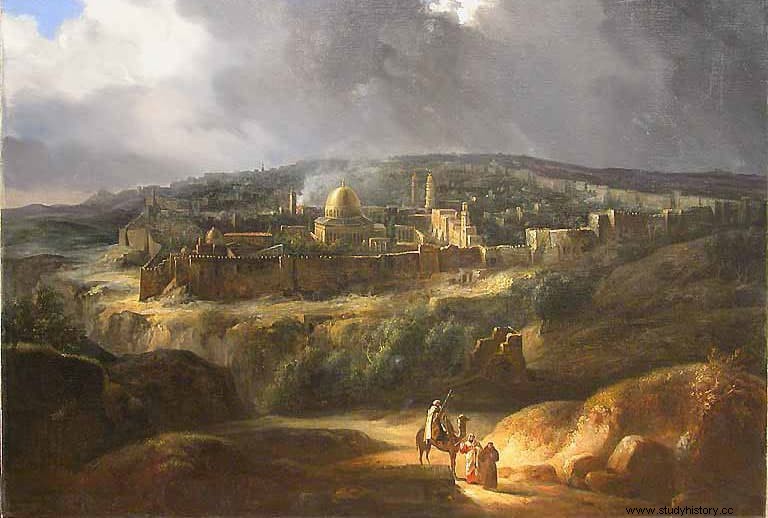
A few months later he accompanied the Italian Alessandro Ricci to the Sinai, traversing its east coast as far as Maghara to make sketches of the hieroglyphs. The plan was to continue to Petra but that region had rebelled against Ottoman rule, so he was not safe, opting to return to Cairo; yes, they went through Sarbout el-Khalem and drew their monuments. However, the idea of personally seeing the marvelous stone-carved city stuck in Linant's mind and he collected information from the Bedouins to try again in the future.
In 1821 he made two trips. The first to El Fayum and the second to the Sudan, where he had to collect geographical information and document its monumental heritage on behalf of the English Egyptologist and adventurer William John Bankes. The mission lasted thirteen months, which allowed him to discover the ruins of Messaourat and Naga shortly before the arrival of the naturalist and geologist Frédéric Cailliaud, on a mission for Mehmet Ali, and he became the first European to reach the city of Meroe, the ancient capital of the Kingdom of Kush, which provided the dynasties of black pharaohs to Egypt and is famous for its sharp pyramids.
Linant then took a break from that exotic nomad to go to London, where in 1824 he contacted the African Company , who years before had financed a trip to the late Swiss Arabist Jean Louis Burckhardt (discoverer of Petra and the temples of Abu Simbel) and was willing to do it with him too. His goal would soon become a nineteenth-century obsession:to discover the sources of the Nile. Linant set out in 1827 and reached the White Nile but the hostility of the local peoples, with whom he fought a skirmish, forced him to back down and, finally give up.
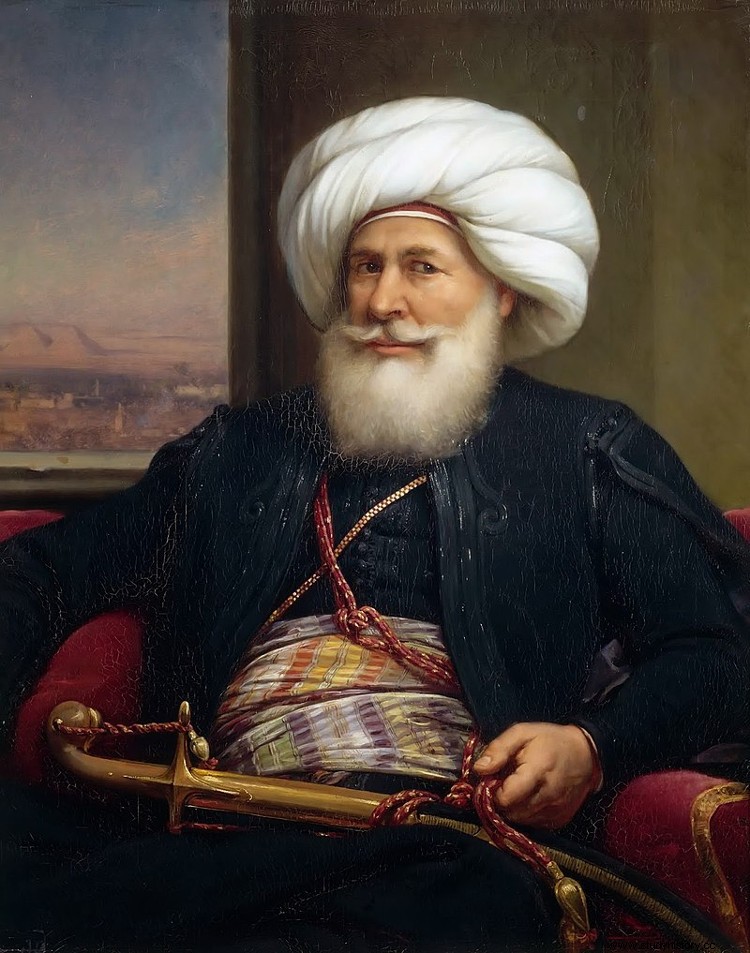
He tried again in 1831 with sponsorship from the Société de Géographie from Paris, although he did not obtain permission from the wali who, in return, sent him to look for the gold mines of Atbai. In between, in 1828, he befriended the archaeologist Léon de Laborde, with whom he was finally able to see Petra in person; the result was a book published ten years later under the title Voyage en Asie Mineure (Journey through Asia Minor). To do this he had to cross the Sinai again, this time through the Isthmus of Suez, where his mind began to turn over the old Egyptian and Roman project of connecting the Mediterranean with the Red Sea, now that it was shown that in reality there was no the nine meter difference that pushed Napoleon's engineers back.
Already in 1822 he had studied the remains of the Trajan Canal and explored the land, but now that he knew it better, things were taking shape, so at the end of his contract with the African Company She decided to stay on the peninsula studying everything he thought was necessary in terms of engineering to propose the construction of a canal to Mehmet Ali. That preparation took a step forward in 1831, when the wali appointed him Chief Engineer of Public Works for Upper Egypt. It was not a hollow position because the Ottoman president was embarking on an intense policy of industrialization of the country, in an effort to modernize it.
In addition to an important educational reform and an agrarian reform, the government adapted the administration to the new times, introduced changes to the European one in the army and developed an intense campaign of work on transport and communications networks, opening irrigation canals and building a series of of dams on the Nile. The latter would be what led Mehmet Ali to the idea of dismantling the pyramids of Giza stone by stone and using the already cut blocks. Presumably.
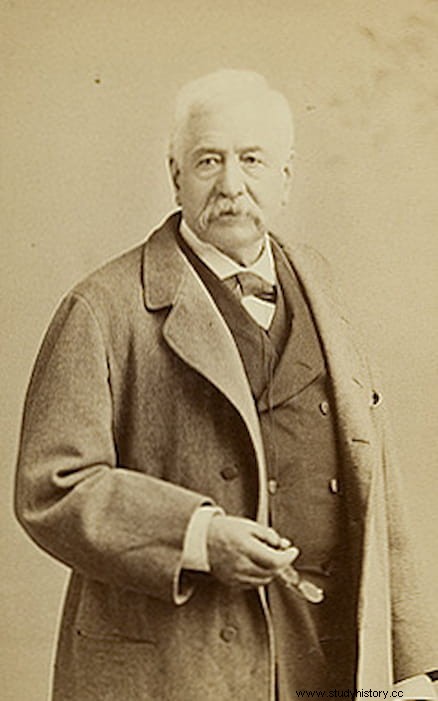
This is what he would suggest to Linant, who in 1837 was already in absolute command of the Ministry of Public Instruction and who had been named bey, that if he was once the equivalent of a provincial governor for that time, it was only an honorary title comparable to that of British gentleman or sir. Linant, who had been thinking for some time about the best way to connect the mentioned seas and consulting for this purpose with the French consul and the engineer Ferdinand de Lesseps, then came across that uncomfortable "suggestion" of the vali.
The stones of the pyramids had already been plundered for centuries for use in various constructions, which is why they were deprived of their marble coating. But the thing did not stop there and the stone blocks themselves were removed for other purposes. The idea of this becoming official and being dismantled was torture for Linant and doubly so, since if he refused to carry out the governor's order, he would probably replace him with someone more willing to obey. Again presumably.
Therefore, he pulled cunningly. Instead of saying no or stating that it was outrageous, he pretended to accept and promised to present a financial analysis on the matter… and managed to make it clear in the final report that it would be much cheaper to extract the stone from a quarry that of the pyramids. Mehmet Ali was convinced and that monumental complex, considered one of the seven wonders of the ancient world, was saved. In the long run, Egypt came out on top because Giza is one of the inexcusable corners for any tourist visiting the country. Once again, presumably.
And now why so much presumption? Well, because the story of the dismantling of the pyramids seems to be a legend with colonialist overtones, more than anything else. There is a true part, which is the reference to using its stones for construction, something that also happened in Europe with Roman monuments, for example. Champollion himself warned the Egyptian government of the loss of thirteen temples in such circumstances, often at the initiative of the fellahin (peasants) but another by order of the governors.
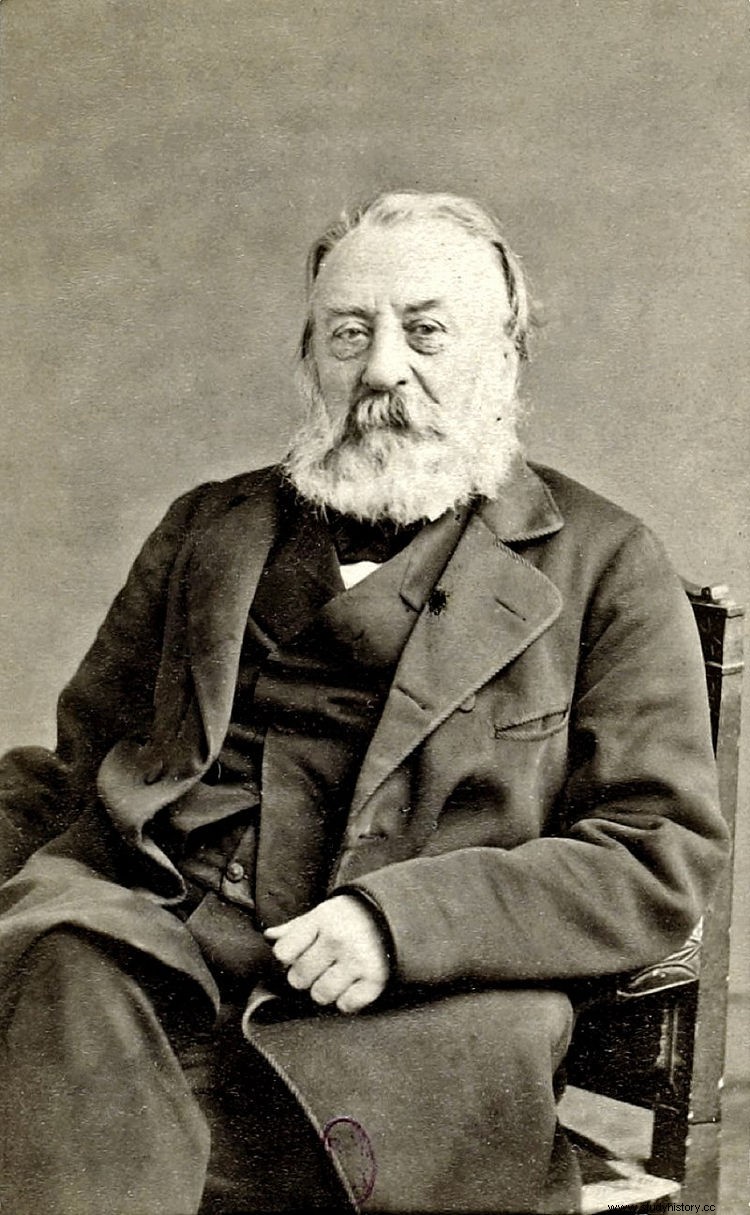
However, the Armenian engineer and Egyptologist Joseph Hekekyan was the first to incubate the idea of using the stones of the pyramids, as he reflected in his diary. And when the French thinker Barthélemy Prosper Enfantin unveiled the alleged plan of the wali, the world was outraged without taking into account that Enfantin thought it was a “poetic” idea that Man could do what time could not:make use of it again. to that material. The detail is that no article from the time mentions Linant's saving role and he himself is the only source on the matter.
Furthermore, some news contemporary to the events attribute the ruse to the French consul, Jean-François Mimaut, a man interested in Egyptology and with a reputation for caring about that heritage, but when he was relieved and returned to France, he did so with an impressive collection. of parts taken out of the country without informing the authorities. Something that not only was not reproached in Europe but also earned him a good reputation as the savior of archaeology, even though many of these pieces were obtained at the cost of great damage.
On the other hand, the idea was spread that the Egyptians, and therefore other colonized peoples, did not care about their monuments. It could be true in some cases (religious extremists considered that past idolatrous) but it was not general and, in fact, Mehmet Ali promulgated in 1835 the law of export of antiquities to the anger of Western archaeologists and collectors, who until then acted at his will. craving for more knowledge (not to mention the destruction of temples and tombs by Napoleon's troops). The chronicles usually present the wali as an obtuse Ottoman to whom Linant had to explain that the pyramids were built from the bottom up or that he interpreted the numbers in his engineer's report as cabalistic signs.
Mehmet Ali died in 1848 but Linant retained his position, which allowed him to present the plan for a Canal between the two seas to the Compagnie Péninsulaire et Orientale in 1841 and three years later to Lesseps himself. Enthusiastic about the project, he obtained from the new vale, Mehmet Said, a concession so that the Compagnie Universelle du Canal Maritime de Suez start the works. Linant alternated duties as chief engineer with those of his position as minister until 1869, when he retired. He stayed to live in Egypt, wrote his memoirs and in 1873 received another distinction, that of pasha.
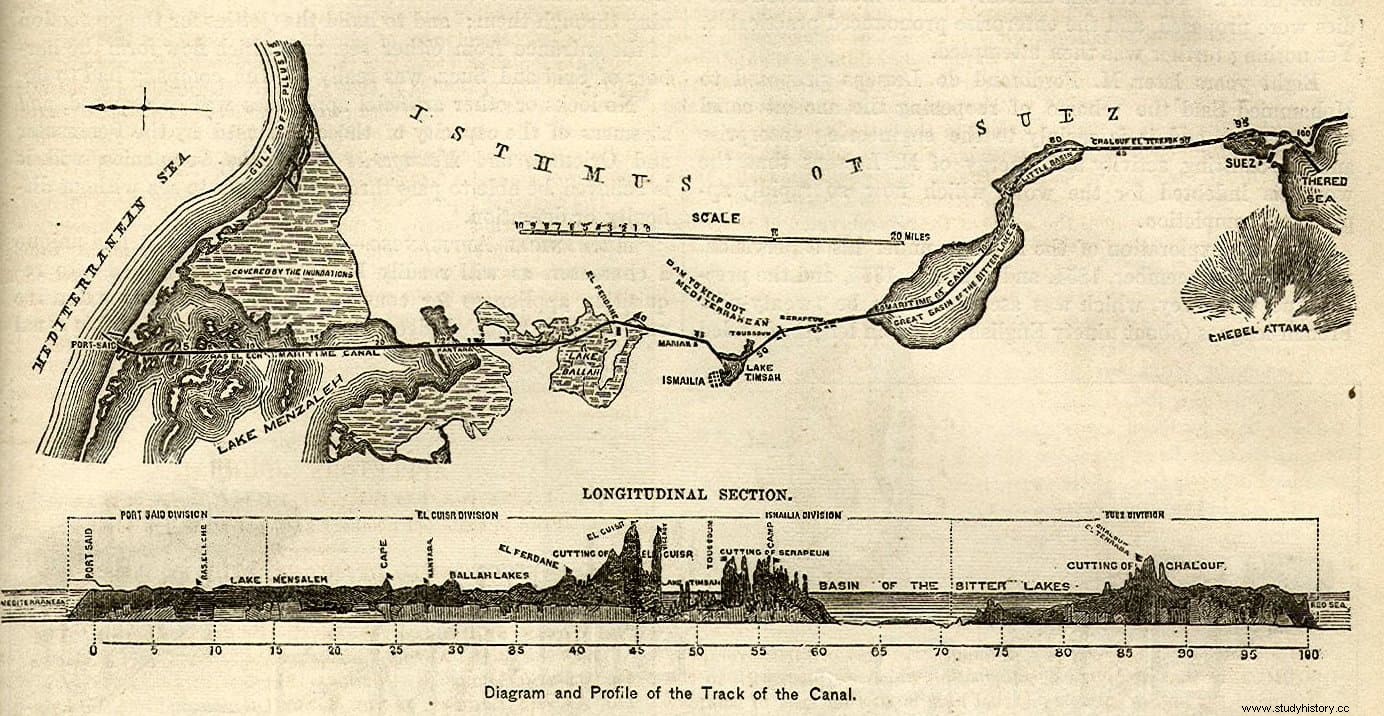
He passed away in 1883 and the memory of him is preserved today in many Egyptian street and place names, although fame over the creation of the Suez Canal was monopolized by Ferdinand de Lesseps. He did the same with the story (right? legend?) of saving the pyramids.
